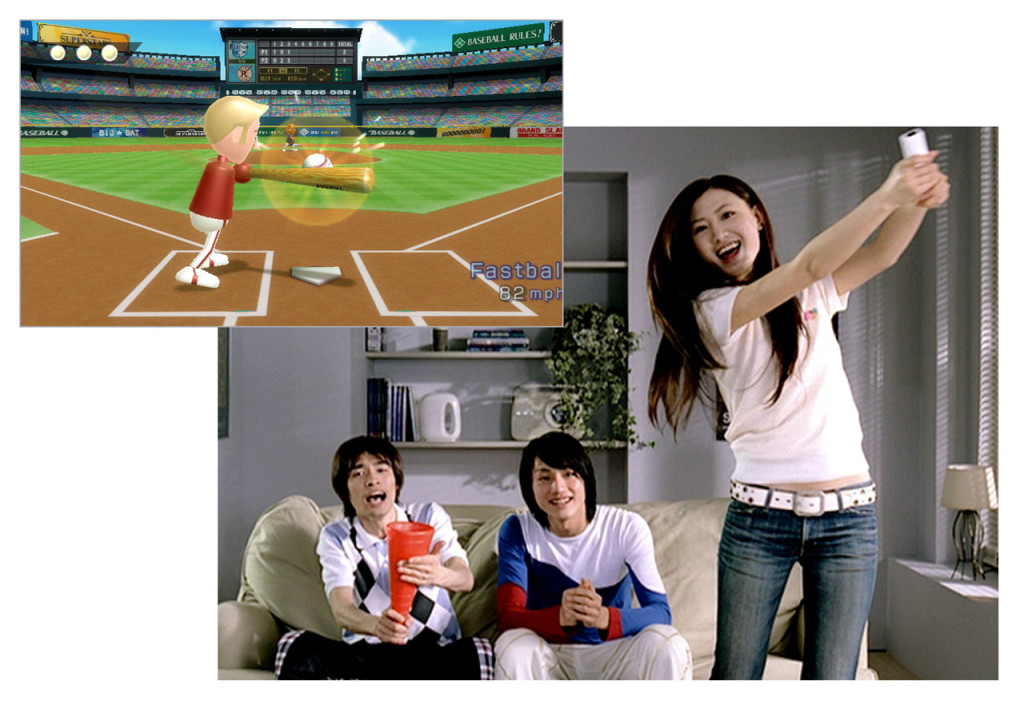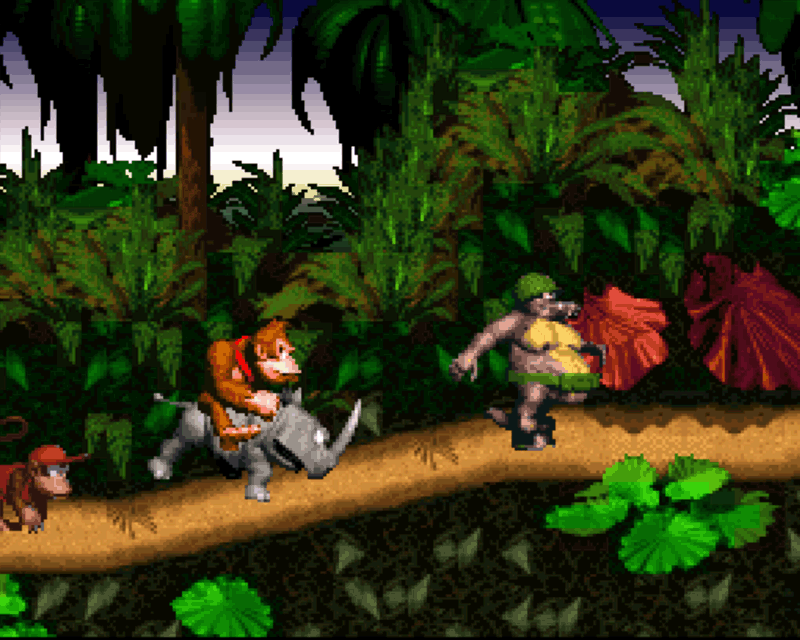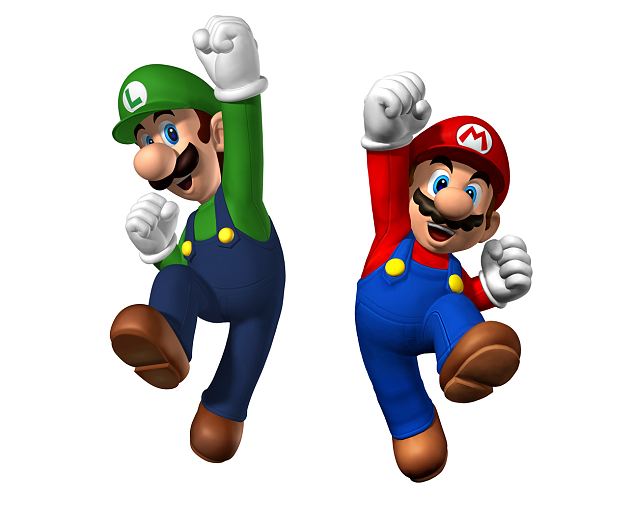Last updated on January 27, 2014
I just read this article lambasting Miyamoto for holding the company’s creative forces in limbo, and I just NEED to respond before my brain explodes.
Please read the first part of this unintentional series, if you will. Then proceed to the jump!
This is absolutely, positively, not true in this particular case at this particular time. This is written by a journalist with a journalist’s perspective, specifically regarding the quality of the games. How else could they judge it?
Nintendo has always been selling the same things, really – they just repackage them in an extremely polished package. Nintendogs and Brain Training were just Tamogotchi and puzzles, respectively; not exactly revolutionary, but they convinced people the DS stood as an excellent time waster. Wii Sports was a pack-in (at least in America regions) for a system that stood for accessible motion-based games. Add to that their effective marketing campaigns and they’ve always found ways to sell the same products stuff since the NES days. It’s the polish that gets people into it.
Games alone never sell a system – you’re really not selling a product, but an idea, as any marketer will tell you. Usually, a game is associated with that idea, certainly, but it’s not always the case. And Nintendo hasn’t convinced much of anyone why the Wii U transcends mere product status (as did the Wii, DS, etc) and become a fixture of home entertainment that improves your life. Sony just did them one better this time around (as did Microsoft, to a lesser degree).

To compare yet another company: Disney always needed to affirm to the public that they were “family entertainment”, and they went through multiple phases of mediocre output, especially when Walt himself was alive. They sometimes rest on their laurels or on other companies (Pixar!) to sustain their output in some entertainment media, usually until they cease profitability. Then they sell us on the next great thing for “family entertainment”, thereby forever keeping themselves relevant and selling their ideology to you.
And, I guess, that’s what led Disney to support pro-gay marriage movements as well. This isn’t out of some misguided sympathy; Disney’s got money to make, and what better way to make it then to appeal to a (at a time) limited demographic? They have a Pride Day for the parks to appeal mightily to such families and couples which remains wildly successful. Whatever the changing nature of “family” is in America and worldwide, they’re there to affirm their status there. They know most Americans (especially conservative ones) will not remove Disney products from their home due to one misstep – that would require far too much work. So, they do it, and it works brilliantly. They must establish or capture the “big idea” to retain their strong foothold on the market. Consider that this 1% of the population could turn into a larger number as more people “come out”, and Disney looks progressive and forward-thinking about “family – Disney wins the war on the mind before it even starts.
Imagine Nintendo in this same light and you’ll see that, regardless of their innovation, they always stick with what works. Good marketing will save Nintendo, regardless of the product. All the hoopla regarding the dearth of new ideas isn’t even relevant to their current position. It doesn’t matter how creative they are in production unless they can sell you and I, the consumer, on how their products will improve our lives (or sell us on some idea, anyway – that’s what they need to find out).
Nintendo’s certainly done this before. The surprise success of Super Mario Bros. certainly relied on SMB as a game, but subsequent systems don’t just sell on the product after the market emerges. You need a hook, a convincing reason to upgrade (or, at least, stick with Nintendo systems for the forseeable future). The SNES provided this with the word “Super” attached to darn near everything, and the “Super” message and improved graphics showed up the Genesis’ increased power over the NES. Genesis won the initial marketing war by priming themselves as the “mature” console, but even then they could only capture 60% of the market share circa 1992. Consider the Genesis’ two year head start, especially in America, and you can see that it didn’t work.
Instead, Nintendo took a different strategy to win at the tail end of the so-called “console wars”. While Sega prepped for their new Saturn console and with Sony waiting in the wings, 1994 looked a dour year for NIntendo’s propsects. With a new Nintendo console a year away (which turned out to be 2 years), Nintendo needed to sell people on the idea of sticking with 16-bit systems for a while longer. What better way than convincing them that the SNES was, in fact, a 3D system?
What a bald-faced lie! What a gambit! But Nintendo proved it with Donkey Kong Country. Even with pseudo-3D graphics, it sold people on the face that the SNES still had what it took to compete with 3D systems, the Playstation and the Saturn. No one could tell the difference that early in the advent of 3D, and this worked to Nintendo’s advanatage. It was a gloriously splendid bluff that, in the eyes of a public that couldn’t tell the difference between real 3D and pre-rendered graphics, worked wonders. That Donkey Kong Country is actually pretty good remains ephemera to the idea it sold.

Nintendo 64 sold on the strength of marketing 3D Nintendo games to a SNES-wielding public, something people desired for two years; they remained a solid second place throughout that generation even with Sony’s massive success.
Still, all things must come to an end. Games sold systems at a time (the earlier you go, the more likely it is), but no longer. Pikmin certainly didn’t sell Gamecubes (hasn’t even sold as much as the best-selling Wii U games, no joke), no matter how original and neat it was, nor Luigi’s Mansion (which comes in just above Nintendo Land or Super Mario Bros. Wii U). Gamecube showed Nintendo their own rut – no big idea, just “appealing to the hardcore gamer” – exactly the wrong approach.
You see, Nintendo works best when they appeal to a broad market. The other companies never, ever do this, instead content to appeal to the “hardcore” rather than the “casual”. In the Gamecube, they made that mistake before, and now they make it again with an infinitely more confusing product with a similar name to their previous one. Nintendo doesn’t seem to know this fact either, but there’s no “casual” or “hardcore” market; there’s only the upmarket and the downmarket.
We, readers and writers of video game blogs, are the upmarket. We’re the people that do research, that have very specific tastes, and that spend lots and lots of time looking at video games for what we like/don’t like. We look at lists of features (what can my console do? What games does it play?) and we know the complexities of each and every product. That’s just part of being an expert(-ish) consumer.
Most people (say, 90% or so approximately, though it depends on the console base, price, and innumerable other factors) are the downmarket. They want to get in, get out, quickly understand the product and get right out to play. They don’t care about all the extraneous stuff, they want that one game for little Billy. For the Wii, everyone wanted Wii Sports; it’s packed in, that’s great! And Wii Sports is also instantaneously accessible to just about anyone playing it. The less choice the better.

So imagine presenting a video game beginner with Wii Sports versus King of Fighters XIII. One is an accessible entry point to video games with tennis controlled by a remote and a character you can’t even move. On the other hand, KOF XIII is one of the most difficult fighters to play with constant offense, specific timing, and execution requirements far above those of the average person. Which one will sell more? Right.
Basically any market works like this. There’s the general consumer, and the informed one: you really want to sell to the general public first and foremost, for this is where the money lies. For you see, the downmarket consumer hates choice. Constrain the product, make it easy to understand with a great campaign, and they will flock to it. Nintendo did this.
NOW, the trick, which I’ve left out previously, is how Nintendo turned downmarket consumer UPSTREAM. Thus, think of the entry point as a gateway drug to more traditional games in Nintendo’s wheelhouse, such as the Mario fare and other related first-party Nintendo software. That is how Nintendo dominated the market last generation: by turning downmarket consumers into upmarket consumers. It’s a great plan – only they abandoned it in their attempt to appeal to…who?
So now that we finish our marketing analysis and historical lessons, where does Nintendo go? They need a big idea in marketing and a game to go along with it, old or new. Easy to say, tough to actually implement, we will see things play out over the next few years. Will they triumph again, or fade into obscurity? Only time will tell.
It remind me, in a way, of Israel’s return to a rebuilt Jerusalem. The citizens of Judah and Ephraim remained in exile for 200+ years, only to return and find constant opposition to their rebuilding project. Ezra and Nehemiah both kept the project running smoothly (under Persian supervision), but they had lost so much cultural tradition in the interim. When they heard the Law for the first time in a few centuries, they didn’t react positively to their now-known disobedience.
9 Then Nehemiah, who was the governor, and Ezra the priest and scribe, and the Levites who taught the people said to all the people, “This day is holy to the Lord your God; do not mourn or weep.” For all the people were weeping when they heard the words of the law. 10 Then he said to them, “Go, eat of the fat, drink of the sweet, and send portions to him who has nothing prepared; for this day is holy to our Lord. Do not be grieved, for the joy of the Lord is your strength.” 11 So the Levites calmed all the people, saying, “Be still, for the day is holy; do not be grieved.” 12 All the people went away to eat, to drink, to send portions and to celebrate a great festival, because they understood the words which had been made known to them.
Nehemiah 9
In this case, it took many years of exile and wandering to bring Israel back to where it belonged, recognizing God’s sovereignty and once again submitting to their God. Nintendo’s just a company. Firing people, or removing key figures, will not help their situation, for that will just bring them lower; they need to remember what made them great in their time of low stature and discover their solutions once again. We don’t need a Gamecube repeat. We need a Nintendo to keep all these famous franchises alive.
Nintendo got their wakeup call; now they need to get on with it.
